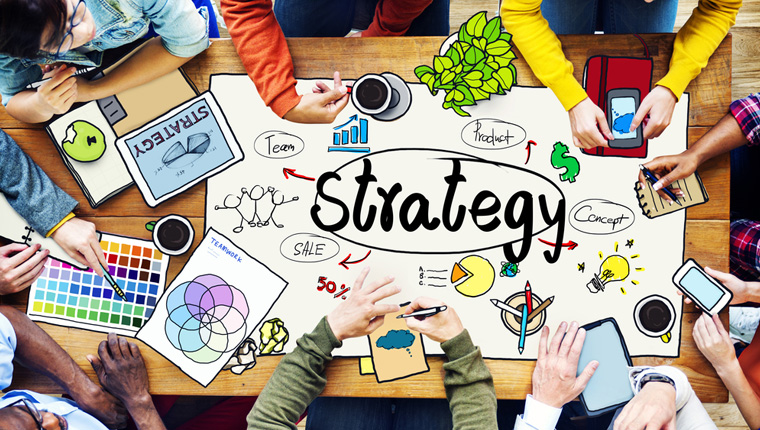5 Powerful Online Tools to Boost Your Asynchronous Learning

Imagine a learning environment where time zones, schedules, and geographic boundaries melt away. A space where your employees can learn at their own pace, in their own place, and at their own convenience without the constraints of fixed training schedules or a specific location. Sounds like a dream, right? Well, asynchronous learning makes this dream come true. This innovative approach adapts to your learners’ lifestyle rather than the other way around. Asynchronous learning is redefining the way learners acquire new information and skills. Read on to know how corporate training can benefit from asynchronous learning and to explore 5 best online tools that support asynchronous learning.
→ Download Now: Instructional Design Strategies to Design Engaging eLearning Courses
Table of Contents
- What is Asynchronous Learning?
- What Are the Benefits of Asynchronous Learning in Corporate Training?
- What Are the 5 Best Online Tools that Support Asynchronous Learning?
What is Asynchronous Learning?
In asynchronous learning, the learner leverages technology to interact directly with the content, in the absence of a facilitator. Asynchronous learning programs differ from traditional instructor-led training programs and other synchronized learning programs in the way the learner interacts with the content.
What Are the Benefits of Asynchronous Learning in Corporate Training?
Asynchronous learning offers a wealth of benefits for corporate training, making it a valuable tool for businesses of all sizes. Here’s a quick overview of some of the key advantages.
1. Offers Flexibility: The biggest perk of asynchronous learning is that it allows employees to learn at their own pace and on their own schedule. This helps organizations cater to the learning needs of busy professionals with demanding workloads as it eliminates the need to coordinate meeting times for training sessions. In fact, employees can access training content during downtime or in between tasks, minimizing disruption to their workflow.
2. Improves Knowledge Retention: Asynchronous learning allows employees to review and revisit training materials as needed. This reinforces understanding and knowledge retention compared to a single, one-time live session.
3. Supports Accessibility: By leveraging asynchronous learning for corporate training, organizations can easily overcome geographical barriers. It proves beneficial when it comes to delivering training to remote and geographically dispersed teams. Employees can access the same training materials, fostering a more inclusive learning environment.
4. Caters to Different Learning Styles: Some employees learn best by reading, while others prefer videos or interactive exercises. Asynchronous learning incorporates a variety of formats, catering to different learning preferences.
5. Cost-Effective: Developing asynchronous learning materials can be more cost-effective than traditional Instructor-led Training (ILT) as the same material can be reused to train multiple new employees. Moreover, there are no venue rental fees or travel expenses associated with asynchronous learning.
6. Scalability: eLearning training materials can be easily rolled out to a large number of employees simultaneously, making it ideal for training a large audience.
7. Support Continuous Learning: Asynchronous learning materials like video tutorials or online modules can serve as a valuable future reference for employees, promoting a culture of continuous learning within the organization.
Now that you’ve read how asynchronous learning benefits corporate training and have made the smart decision to include asynchronous learning in your online training program, it’s time to get an insight into the online tools you can use to ensure effective asynchronous learning.

Instructional Design Strategies to Design Engaging eLearning Courses
Design Learner-Centric eLearning
- Importance of ID Strategies in eLearning
- Parameters to Select the Right ID Strategy
- ID Strategies for Effective Results
- Case Studies
What Are the 5 Best Online Tools that Support Asynchronous Learning?
How to Make Asynchronous Learning Easier?
Here are 5 online tools to help you out:
- Learning Management Systems
- Video Hosting and Streaming Platforms
- Discussion and Collaboration Platforms
- Project Management Tools
- eLearning Authoring Tools
Asynchronous learning tools are essential for providing flexibility in online training. These tools allow learners to access content, participate in discussions, and complete assignments at their own pace. Here are 5 online tools that support asynchronous learning -
1. Learning Management Systems
A Learning Management System (LMS) is a robust online platform that facilitates the management, delivery, and tracking of educational content and training materials. LMSs are widely used in both academic and corporate settings to support asynchronous learning.
Here are some key features and benefits of an LMS:
- Content Management: LMSs allow instructors and trainers to create, organize, and deliver a variety of learning materials, such as text documents, videos, quizzes, and assessments.
- User Management: LMSs provide tools for user enrollment, user access control, and user tracking, making it easy to manage a large number of learners.
- Discussion Forums: Many LMSs include discussion forums or chat features that enable asynchronous communication among learners and instructors.
- Assessment and Progress Tracking: LMSs often come with built-in assessment tools, including quizzes and assignments, and provide analytics to track learners' progress and performance.
- Scalability: LMSs can scale to accommodate the needs of small groups or large organizations, making them suitable for various training contexts.

2. Video Hosting and Streaming Platforms
Video hosting and streaming platforms play a crucial role in asynchronous learning by providing a means to deliver video content to learners. These platforms offer a place to upload and store videos securely. Users can organize their video libraries, making it easy to access and share content. Video-based learning content is streamed over the internet, allowing learners to access it without having to download large files. This feature is especially important for users with limited storage space or slower internet connections.
Many video hosting and streaming platforms support closed captioning and provide options for video quality, making content more accessible to a wider audience. These platforms often offer analytics that allow instructors and content creators to track video engagement, view duration, and other metrics to assess the effectiveness of their content. Some platforms enable interactive features, such as quizzes or annotations within videos, enhancing the learning experience.
Watch this video to know the benefits of video-based learning in corporate training.
3. Discussion and Collaboration Platforms
Discussion and collaboration platforms are essential for facilitating communication and interaction among learners and instructors in asynchronous learning environments. These platforms offer tools for creating discussion threads, forums, and chat rooms where learners can engage in conversations on course topics. Users can upload and share documents, images, and other files, making it easy to collaborate and exchange materials.
Depending on the platform, users can engage in real-time chat or participate in discussions at their own pace, enhancing flexibility. Many of these platforms integrate with other tools like project management software, calendars, and document-sharing services. Popular discussion and collaboration platforms include Slack, Microsoft Teams, and Google Workspace (formerly G Suite). These platforms foster collaboration and communication, which are critical components of asynchronous learning, allowing learners to connect and exchange ideas on their own schedules.

Instructional Design Strategies to Design Engaging eLearning Courses
Design Learner-Centric eLearning
- Importance of ID Strategies in eLearning
- Parameters to Select the Right ID Strategy
- ID Strategies for Effective Results
- Case Studies
4. Project Management Tools
Project management tools are primarily designed for managing projects, but they can also be useful for organizing and tracking training initiatives in asynchronous learning environments. These tools allow users to create and manage tasks, assignments, and deadlines, making it easier to organize and track learning activities. Project management tools often provide features for team collaboration, discussion, and document sharing, which are valuable for group projects and asynchronous teamwork.
Some tools include Gantt chart features, enabling users to create visual timelines for projects and learning plans. Popular project management tools include Trello, Asana, and Jira. While they are not training-specific, they can be adapted for training purposes, helping learners and instructors manage assignments, projects, and course schedules effectively in an asynchronous learning setting.
5. eLearning Authoring Tools
eLearning authoring tools are software applications that allow content creators to design and develop interactive eLearning materials. These tools are essential for building engaging and effective asynchronous learning resources. eLearning authoring tools offer a variety of features for creating content, including text, images, videos, quizzes, simulations, and more. These tools enable the incorporation of interactive elements such as quizzes, assessments, and branching scenarios, enhancing learner engagement.
Authoring tools often produce content that can be easily integrated into LMSs and other eLearning platforms, making content distribution seamless. Many authoring tools provide data on learner progress, allowing content creators to assess the effectiveness of their materials. These tools empower trainers and instructional designers to create engaging and interactive content for asynchronous learning.

Parting Thoughts!
These tools offer a wide range of features, from content creation and distribution to collaboration and communication. L&D pros and trainers can choose the ones that best fit their needs and the specific requirements of their asynchronous learning programs. Here’s an eBook on instructional design strategies to help you design engaging eLearning courses for your online training program and support your asynchronous learning narratives.
Editor’s note: This post was originally published on November 19, 2023 and has been updated for comprehensiveness.





